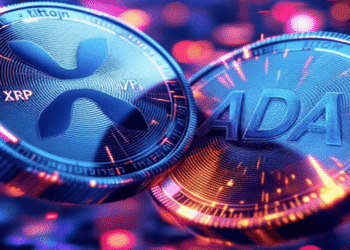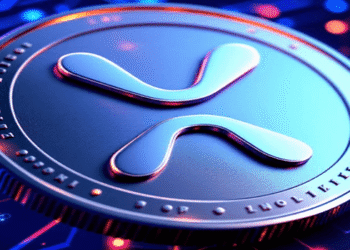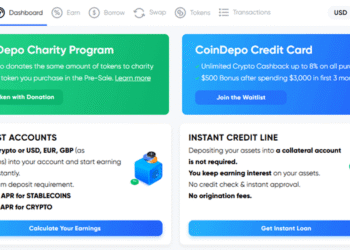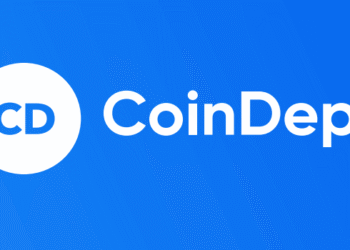Bitcoin (BTC) is a decentralized digital currency that operates on a peer-to-peer network, eliminating the need for intermediaries like banks or governments. Created in 2008 by an anonymous person or group under the pseudonym Satoshi Nakamoto, Bitcoin was introduced through a white paper titled “Bitcoin: A Peer-to-Peer Electronic Cash System” and became operational in 2009 with the mining of its first block. As of June 24, 2025, Bitcoin’s price stands at approximately $104,894 USD, with a market capitalization exceeding $2 trillion, making it the largest cryptocurrency by market value.
Bitcoin uses blockchain technology, a distributed ledger that records every transaction across a network of computers called nodes. Each node maintains an identical copy of the Bitcoin blockchain, ensuring transparency and security through cryptography. Bitcoin’s smallest unit, a satoshi, is one hundred-millionth of a Bitcoin, divisible to eight decimal places, enabling microtransactions. It serves as a medium of exchange for financial transactions at merchants displaying “Bitcoin Accepted Here” and as a digital asset for speculative investment due to its price appreciation over time. Bitcoin is the first cryptocurrency, pioneering a new kind of money that uses peer-to-peer technology, allowing anyone with an internet connection to participate without a trusted third party like a bank or payment processor.
Key Features of Bitcoin
- Decentralization: No government or central bank controls Bitcoin, making it resistant to censorship and institutional manipulation.
- Blockchain Technology: A secure, transparent ledger that records all Bitcoin transactions, maintained by a decentralized network.
- Limited Supply: Only 21 million Bitcoins will ever exist, with approximately 19 million currently in circulation, contributing to its value as a scarce digital asset.
- Cryptographic Security: Transactions are secured using cryptographic techniques, ensuring trust across the entire network.
Bitcoin, pioneered by Satoshi Nakamoto, is a decentralized digital currency using blockchain for secure peer-to-peer transactions, offering high-return potential with significant risks.
Should You Get Bitcoin?
Investing in Bitcoin, the most popular cryptocurrency, can be enticing due to its historical performance and unique characteristics, but it comes with significant risks. Below is a detailed analysis of the pros and cons, along with expert recommendations to help you decide if Bitcoin fits your investment strategy.
Pros of Investing in Bitcoin
- High Return Potential: Bitcoin’s price has grown dramatically, from $0.40 in 2010 to over $100,000 in 2025, offering substantial returns for early investors. For example, it surged from $7,167.52 in December 2019 to $28,984.98 by December 2020, and reached $100,000 in December 2024.
- Decentralized Nature: Operating without a trusted third party, Bitcoin provides financial autonomy and protection against institutional control, appealing to those seeking an alternative to traditional financial systems.
- Increasing Acceptance: More merchants, from small businesses to large corporations, accept Bitcoin as a form of payment, enhancing its utility as a payment method.
- Non-Correlated Asset: Bitcoin often moves independently of traditional markets, similar to gold, offering diversification benefits for investors.
Cons of Investing in Bitcoin

- High Volatility: Bitcoin’s price can fluctuate significantly, with examples like a drop from $47,454 in March 2022 to $15,731 by November 2022, and daily swings of thousands of dollars.
- Regulatory Uncertainty: Governments are still shaping cryptocurrency regulations, with some countries like India imposing restrictions and the EU implementing MiCA in 2023.
- Security Risks: While the Bitcoin blockchain is secure, cryptocurrency exchanges and digital wallets are vulnerable to hacks, malware, and scams. Losing your private key can result in permanent loss of funds.
- Lack of Insurance: Unlike bank deposits, Bitcoin holdings are not insured by agencies like the FDIC or SIPC, though some exchanges like Coinbase offer limited third-party insurance.
Expert Recommendations
Financial advisors caution that Bitcoin is a high-risk digital asset suitable only for those with a high risk tolerance and a strong financial position. Experts suggest a 1-2% portfolio allocation to Bitcoin to balance potential gains with downside risk. Always diversify your cryptocurrency investments and only risk what you can afford to lose. Research suggests consulting a financial advisor before entering the cryptocurrency market.
| Aspect | Pros | Cons |
|---|---|---|
| Returns | Potential for high returns (e.g., 300% from 2019-2020) | High volatility with significant price drops |
| Regulation | Decentralized, no central control | Ongoing regulatory battles, potential bans |
| Security | Secure blockchain technology | Vulnerable exchanges, risk of scams |
| Utility | Growing merchant acceptance | Limited transaction speed (7 transactions/second vs. networks like Visa’s 65,000) |
How to Accumulate Bitcoin
There are several methods to acquire Bitcoin, with buying and mining being the most common. Below are detailed steps for each, along with other methods to earn this virtual currency.
Buying Bitcoin
Purchasing Bitcoin through a cryptocurrency exchange is the most accessible method for most people. Here’s a step-by-step guide:
- Choose a Reputable Exchange: Select a trusted platform like Coinbase or Binance. Research fees, security features, and user reviews to avoid scams.
- Set Up a Bitcoin Wallet: Store your Bitcoin in a digital wallet:
- Hot Wallets: Online wallets provided by exchanges or apps (e.g., Trust Wallet). They are convenient but less secure.
- Cold Wallets: Offline hardware wallets like Ledger or Trezor, offering enhanced security for a one-time cost.
- Fund Your Account: Deposit fiat currency (e.g., USD) via bank transfer, debit card, or services like PayPal. Be aware of transaction fees, which vary by platform.
- Place an Order: Buy Bitcoin at the current market price (market order) or set a specific price (limit order) using your Bitcoin address.
- Transfer to Your Wallet: Move your Bitcoins to your personal wallet to reduce the risk of exchange hacks.
Security Tips: Never share your private key or wallet app’s seed phrase. Use two-factor authentication (2FA) on exchanges and consider cold storage for long-term holdings to protect against scams.
Mining Bitcoin
Bitcoin mining involves using specialized hardware to solve complex mathematical problems, validating Bitcoin transactions on the blockchain and earning rewards in newly minted Bitcoins. Here’s how it works:
- Acquire Hardware: Use Application-Specific Integrated Circuits (ASICs), designed specifically for Bitcoin mining, costing $2,000-$20,000.
- Join a Mining Pool: Due to high competition, join a pool like Foundry Digital or Antpool to combine computing power and share rewards.
- Install Mining Software: Use software like CGMiner or BFGMiner to connect your hardware to the pool.
- Start Mining: Your hardware will solve cryptographic puzzles, adding each block to the blockchain and earning rewards.
Profitability Considerations: As of 2025, miners earn 3.125 Bitcoins per block, but profitability is limited for individuals due to high electricity costs and network difficulty. The supply of Bitcoin halves approximately every four years, reducing rewards. Large-scale miners with access to cheap electricity dominate, making it less viable for small-scale miners.
Other Methods
- Freelancing: Offer services (e.g., programming, writing) and request payment in Bitcoin
- Affiliate Programs: Promote Bitcoin-related products or services and earn commissions in Bitcoin.
- Airdrops and Faucets: Participate in promotional campaigns or complete tasks on websites offering small amounts of Bitcoin, though these yield minimal returns.
- Accept Bitcoin: If you run a business, accept Bitcoin as a payment method to accumulate it directly.
Note: Alternative methods like airdrops and faucets are often time-consuming and may not be worth the effort for significant accumulation in the cryptocurrency market.

Conclusion
Bitcoin, created by Satoshi Nakamoto, represents a groundbreaking decentralized digital currency, offering a new kind of money that operates without a government or central bank. Its blockchain technology ensures secure financial transactions across a peer-to-peer network, anywhere in the world. While its potential for high returns and growing acceptance make it appealing, its volatility, regulatory uncertainties, and security risks require caution. For those interested, buying Bitcoin through reputable exchanges is the most practical method, while mining is generally reserved for large operations with significant computing power. Always conduct thorough research, track the price, and consider consulting a financial advisor before investing in this form of digital currency.
















